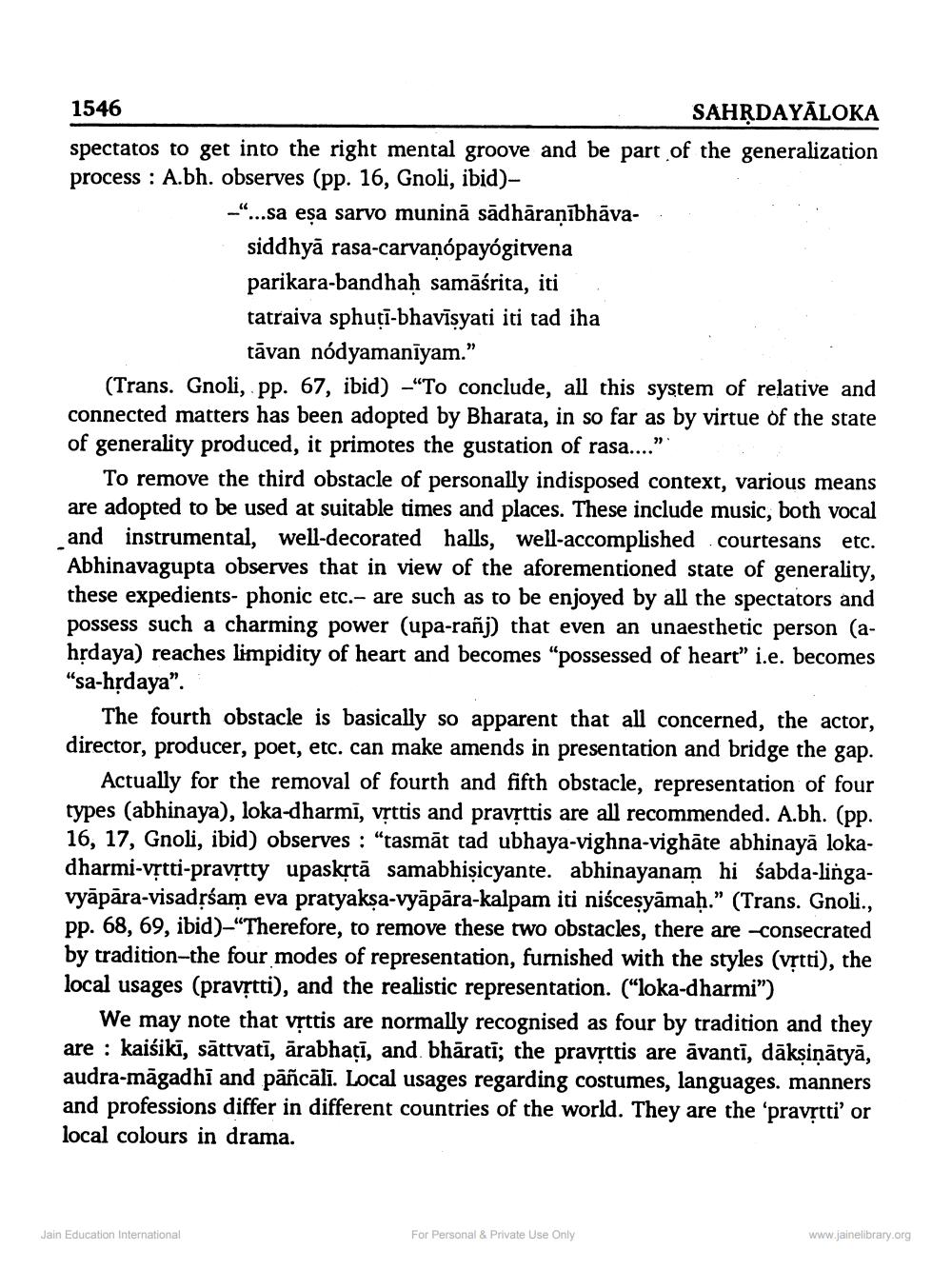________________
1546
SAHRDAYĀLOKA spectatos to get into the right mental groove and be part of the generalization process : A.bh. observes (pp. 16, Gnoli, ibid)
-“...sa eșa sarvo muninā sādhāraṇībhāva
siddhyā rasa-carvanópayógitvena parikara-bandhaḥ samāśrita, iti tatraiva sphutī-bhavīsyati iti tad iha
tāvan nódyamanīyam.” (Trans. Gnoli, pp. 67, ibid) -“To conclude, all this system of relative and connected matters has been adopted by Bharata, in so far as by virtue of the state of generality produced, it primotes the gustation of rasa...."
To remove the third obstacle of personally indisposed context, various means are adopted to be used at suitable times and places. These include music, both vocal and instrumental, well-decorated halls, well-accomplished courtesans etc. Abhinavagupta observes that in view of the aforementioned state of generality, these expedients- phonic etc.- are such as to be enjoyed by all the spectators and possess such a charming power (upa-rañj) that even an unaesthetic person (ahğdaya) reaches limpidity of heart and becomes “possessed of heart" i.e. becomes "sa-hrdaya”.
The fourth obstacle is basically so apparent that all concerned, the actor, director, producer, poet, etc. can make amends in presentation and bridge the gap.
Actually for the removal of fourth and fifth obstacle, representation of four types (abhinaya), loka-dharmī, vrttis and pravsttis are all recommended. A.bh. (pp. 16, 17, Gnoli, ibid) observes : "tasmāt tad ubhaya-vighna-vighāte abhinayā lokadharmi-vștti-pravṛtty upaskrtā samabhisicyante. abhinayanam hi śabda-lingavyāpāra-visadssam eva pratyakşa-vyāpāra-kalpam iti niścesyāmah.” (Trans. Gnoli., pp. 68, 69, ibid)-“Therefore, to remove these two obstacles, there are consecrated by tradition-the four modes of representation, furnished with the styles (vrtti), the local usages (pravstti), and the realistic representation. (“loka-dharmi”)
We may note that vịttis are normally recognised as four by tradition and they are : kaiśikī, sāttvatī, ārabhatī, and bhāratī; the pravsttis are avanti, dākṣiṇātyā, audra-māgadhi and pāñcālī. Local usages regarding costumes, languages. manners and professions differ in different countries of the world. They are the 'pravrtti' or local colours in drama.
Jain Education International
For Personal & Private Use Only
www.jainelibrary.org




